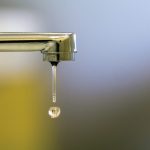For many households, especially those located in rural or semi-rural areas, a well is a primary source of water. This makes the sudden absence of water from the well not just a minor inconvenience, but a serious problem that needs immediate attention. But what causes this issue? Is it a temporary dry spell affecting groundwater levels, or is there a failure within your well system? To determine the cause and find the appropriate solution, let’s explore the differences between a dry spell and system failure, and how each can impact your well’s water supply.
Understanding the Basics of Well Systems
A well system is an integrated setup designed to extract groundwater for household use, consisting mainly of the well itself, a pump, connecting pipes, and a pressure tank. The well taps into an underground aquifer and is encased to prevent collapse and contamination. Depending on the depth of the groundwater, either a submersible pump (placed inside the well) or a jet pump (located above ground) is used to lift water to the surface. Pipes connect the pump to the well and the household plumbing system, ensuring a steady flow.
The pressure tank plays a crucial role in maintaining consistent water pressure throughout the home and minimizing the frequency of pump activation, which extends the life of the pump and saves energy. Together, these components work to provide a reliable water supply, with each part contributing to the efficient and safe operation of the system. Understanding these basics helps in identifying where issues might arise, simplifying troubleshooting and maintenance efforts.
Identifying the Cause: Dry Spell or System Failure
Determining why your well system isn’t providing water is the first step in finding the right solution. The two most common culprits are dry spells and system failures. Recognizing the signs of each can guide you toward the appropriate action to take.
Dry Spell
Dry spells can lead to a significant drop in groundwater levels, impacting well water availability. Here are the indicators that a dry spell might be affecting your well:
- Gradual decrease in water pressure: Water flow diminishes over time, not abruptly.
- Changes in water quality: Water may appear murkier or have a different taste as the water level drops.
- Sudden air “spits” from the faucet: Indicative of air entering the system due to low water levels.
System Failure
System failures can be sudden and are typically due to mechanical issues. The following signs can indicate a failure within your well system:
- Abrupt stop in water flow: Water ceases to flow without a gradual decrease in pressure.
- Strange noises from the pump: Sounds like grinding, humming, or buzzing can signal a malfunction.
- Frequent cycling of the pump: The pump turns on and off more often than normal, indicating pressure tank issues or leaks in the system.
- Visible leaks or wet areas around the well cap: Signs of physical damage or leaks in the system.

Steps to Take When You Have No Water From Well
If you find yourself without water, start with basic troubleshooting: check your circuit breaker, inspect visible piping for leaks, and consider whether recent weather patterns suggest a dry spell. If these quick checks don’t reveal the problem, it’s time to call in the professionals.
Preventive Measures and Maintenance
Preventative maintenance is key to avoiding sudden water outages. Regular checks of your well system, annual professional inspections, and being mindful of your water usage during dry periods can all help maintain a consistent supply.
A1 Well Drilling Is Your Solution for A Reliable Water Supply
Facing water issues with your well can be daunting, but you’re not alone. A1 Well Drilling brings over four decades of expertise to every job, ensuring your well system is in the best hands. Our team of licensed professionals is dedicated to providing top-notch service, from routine maintenance to emergency repairs. With a commitment to quality, safety, and customer satisfaction, we’re here to solve your well problems. Don’t let well issues disrupt your life. Trust the experts at A1 Well Drilling to keep your water flowing. Contact us today for a consultation and see why we’re the trusted choice for well services.
F.A.Q. Section
How can I prevent my well from running dry?
Monitor water usage, especially during dry seasons, and consider rainwater harvesting as a supplementary source.
What does it mean if my well pump is constantly running?
It could indicate a leak in the system or a failure in the pressure tank.
How often should a well system be inspected?
At least annually by a professional to ensure all components are functioning correctly.
What maintenance tasks can homeowners do?
Regularly check for leaks, maintain the area around the well, and ensure proper filtration systems are in place.
How do I choose the right professional for well service?
Look for licensed, experienced providers with positive reviews and a good reputation in the community.






